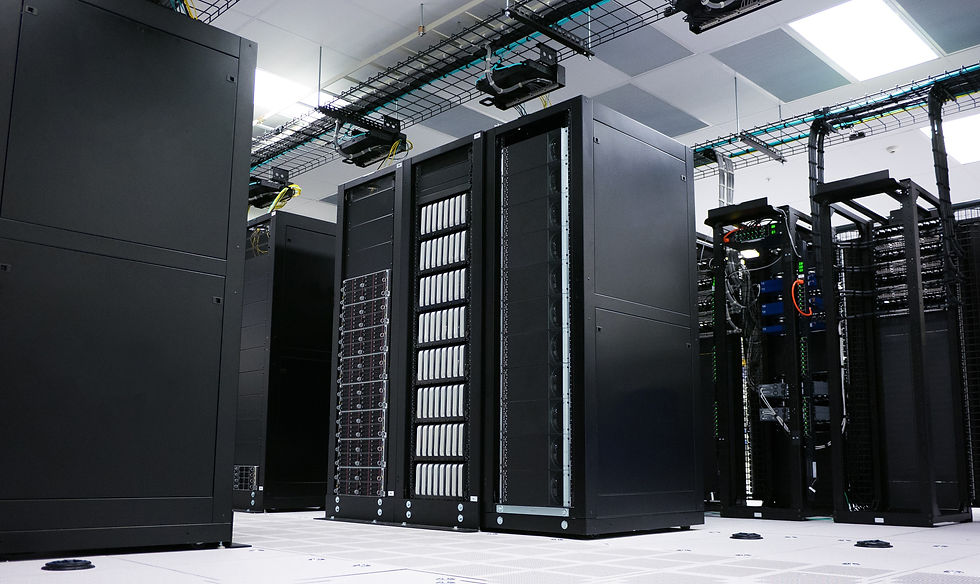Ai and Drone Technology
- Motus Imaging Solutions
- Mar 5, 2023
- 4 min read
Updated: Apr 17, 2023
what is Ai?

AI stands for artificial intelligence, which refers to the development of computer systems and algorithms that can perform tasks that typically require human intelligence, such as visual perception, speech recognition, decision-making, and language translation. AI systems are designed to learn from experience and adjust their performance based on feedback, making them increasingly effective at performing complex tasks over time. AI technology can be classified into different categories, including machine learning, natural language processing, computer vision, robotics, and expert systems. AI is increasingly being used in a variety of industries, including healthcare, finance, transportation, and entertainment, to improve efficiency, accuracy, and decision-making.
There are several different types of AI, including:
Reactive Machines: These AI systems do not have any memory or ability to use past experiences to inform future decisions. They simply react to current situations based on pre-programmed rules.
Limited Memory: These AI systems have some ability to store past experiences and use that information to make future decisions. They are often used in self-driving cars and other autonomous vehicles.
Theory of Mind: These AI systems have a more advanced understanding of the world around them, including the ability to recognize emotions and mental states in other beings. They are often used in fields like social robotics and customer service.
Self-Aware AI: These AI systems have a sense of self and can reflect on their own existence. They are still largely in the realm of science fiction, but researchers are actively working on developing this type of AI.
Artificial General Intelligence (AGI): This is the idea of creating an AI system that can perform any intellectual task that a human can. AGI is still a theoretical concept, and no system has yet been developed that truly meets this definition.
Narrow AI: This is the most common type of AI in use today. Narrow AI systems are designed to perform specific tasks, such as playing chess or recognising faces in photos. They are often highly specialized and cannot easily be adapted to new tasks.

Do drones use AI?
Yes, drones can use AI (Artificial Intelligence) in various ways. Here are some examples:
1. Autonomous Navigation: Many drones are equipped with AI-powered navigation systems that enable them to navigate autonomously. These systems use machine learning algorithms to recognise and avoid obstacles, plan routes, and optimise flight paths.
2. Object Detection and Tracking: Some drones use computer vision and deep learning algorithms to detect and track objects in real-time. This can be useful in applications like search and rescue, surveillance, and monitoring.
3. Precision Agriculture: Drones equipped with AI-powered sensors and cameras can collect data on crop health and yield, soil moisture, and other factors. This data can be analysed using machine learning algorithms to provide farmers with insights on how to optimise crop production.
4. Delivery: Drones can be used for package delivery in urban areas. AI algorithms can be used to optimise delivery routes and avoid obstacles such as buildings and trees.
Overall, AI is becoming an increasingly important component of drone technology, enabling drones to perform a wide range of tasks more efficiently and accurately.
What happens after the data has been captured?

Artificial Intelligence is used to locate faults and anomalies when inspecting digital images through a process known as image analysis or computer vision, AI can be trained to recognise faults and anomalies in a variety of digital imaging, including drone photography, drone thermal imaging, and drone inspection. The accuracy of the AI system depends on the quality and quantity of the training data, as well as the sophistication of the AI algorithms being used.
Here are some common ways AI is used for this purpose:
· Object detection: AI can be trained to detect specific objects or features within an image that indicate a fault or anomaly. For example, in a manufacturing setting, AI might be trained to detect defects such as cracks or discolouration on a production line.
· Pattern recognition: AI can also be used to recognise patterns in images that indicate a fault or anomaly. This approach is useful in cases where the exact location of the fault may not be known. For example, AI might be trained to recognise patterns of corrosion on a metal surface.
· Anomaly detection: AI can be trained to identify deviations from normal behaviour or patterns. This approach is useful when the fault or anomaly is not easily defined or when the data being analysed is highly variable. For example, AI might be used to detect anomalous behaviour in network traffic that could indicate a security breach.
Final Thoughts
The use of AI in drone inspection flights and data sets is to detect and identify defects or damage in infrastructure such as bridges, buildings, solar panels, wind turbines and power lines. By using computer vision and machine learning algorithms, drones can quickly and accurately identify and analyse potential issues, allowing for faster and more efficient inspections.
Another area where AI can be useful is in the identification of anomalies and patterns in large datasets. By analysing data collected by drones over time, AI algorithms can identify trends, patterns, and anomalies that may indicate potential problems or issues that need to be addressed.
Additionally, AI can help improve the safety and efficiency of drone inspection flights by enabling drones to autonomously navigate and avoid obstacles in complex environments, such as urban areas or industrial sites.
Overall, AI is expected to play a crucial role in the future of drone inspections, improving the speed, accuracy, and safety of inspections while reducing costs and increasing efficiency.

Comments